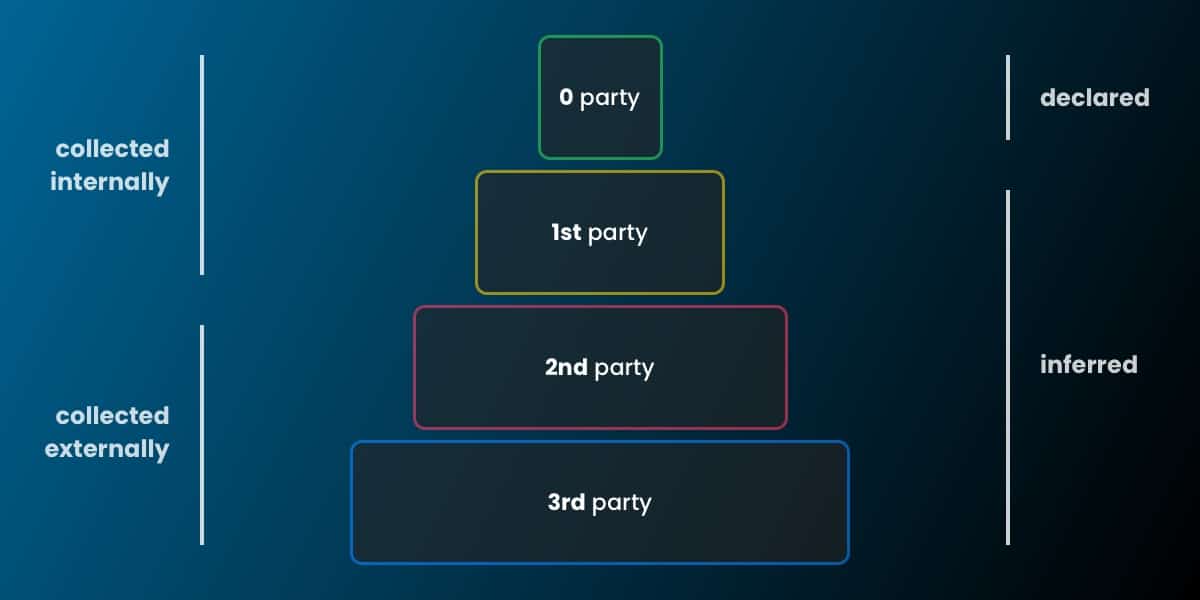
Sports media and leagues need to collect data to understand fans’ interests, behaviors, and preferences to offer tailored engagement. In this blog post, we explain how to build a fan database with zero-party data without intrusively harassing fans.
What is Zero-Party Data?
You can collect fan data in different ways, with or without the fan’s knowledge. Let’s divide user data into 4 categories:
0-Party Data
Data that a fan shares proactively and intentionally.
Eg. a fan sharing directly with you their favorite club or player, as well as other interests and feedback.
1st-Party Data
Data that you, as a sports media or league, collect directly from a fan based on the actions he takes on your channels.
Eg. the pages a fan visits, purchase history, location, membership, and loyalty program status.
2nd-Party Data
Second-party data is first-party data you receive from another company with whom you have a partnership that benefits you both. Often when you create a profile, you are asked if you permit to share your data with partners.
Eg. a soccer club might share fan travel data with hotels.
3rd-Party Data
Third-party data is data from external sources that have no direct link to your sports medium or league. Usually, it is data that the fan has unknowingly or not explicitly consented to.
Eg. a 3rd-party cookie stored on your device by parties other than the website or app you are currently visiting. You often click the cookie notice away immediately, but in doing so you have (unknowingly?) permitted ad networks or social media platforms to track all your movements.
Why Zero-Party Data is the Future
Soon, the main data sources for sports media and leagues will be zero- and first-party. We’re moving toward a combination of direct interactions with your platforms, as well as durable identifiers like universal IDs.
One thing is clear: a cookie-less future is coming because 3rd-party tracking cookies are being banned. Several browsers already block them or plan to do so in the future.
The definitive shift toward more control over your online data has begun. It is important to give fans transparent insight into how you collect data, how you use it, and that they are fully in control.
How to Start Collecting Zero-Party Data from Sports Fans
Step 1: Set up a single sign-on.
Step 2: Set up touchpoints to capture data.
Step 3: Give fans reasons to log in and participate.
Step 4: Channel the data to a Customer Data Platform (CDP).
Step 5: Leverage the collected data to personalize and improve the fan experience.
What Touchpoints Can You Set Up?
To collect zero-party data from sports fans, sports media, and sports leagues can use the following strategies:
- Surveys: Conduct surveys among fans to gather information about their interests, preferences, and behaviors. Distribute the surveys through email, social media, or mobile apps and cover a variety of topics such as favorite teams, players, sports, and preferred channels for receiving information.
- Preference Centers: Offer preference centers where fans provide information about themselves and their interests. This information is used to personalize their experiences, such as recommending relevant content, promotions, or merchandise.
- Games, Contests, and Promotions: Run contests and promotions that require fans to log in to participate. From experience, we know offering fantasy sports is a compelling reason for sports fans to log in.
- Feedback Forms: Provide feedback forms on your websites or mobile apps where fans provide their opinions and suggestions.
- Personalized Experiences: Provide personalized experiences that require fans to provide information about their preferences or interests, such as creating customized highlight reels or recommending personalized merchandise.